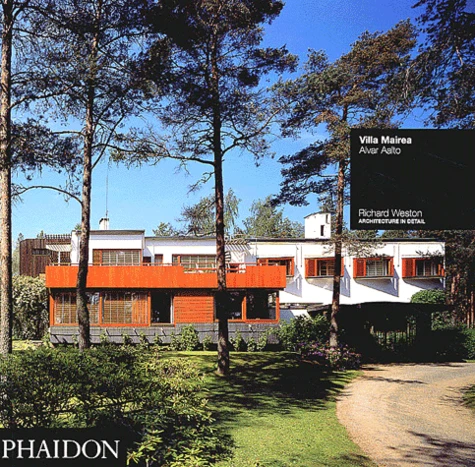Villa Mairea. Alvar Aalto
Par :Formats :
Définitivement indisponible
Cet article ne peut plus être commandé sur notre site (ouvrage épuisé ou plus commercialisé). Il se peut néanmoins que l'éditeur imprime une nouvelle édition de cet ouvrage à l'avenir. Nous vous invitons donc à revenir périodiquement sur notre site.
- Réservation en ligne avec paiement en magasin :
- Indisponible pour réserver et payer en magasin
- Nombre de pages60
- PrésentationBroché
- Poids0.38 kg
- Dimensions25,0 cm × 25,0 cm × 0,6 cm
- ISBN0-7148-4216-8
- EAN9780714842165
- Date de parution17/05/2002
- CollectionArchitecture in detail
- ÉditeurPhaidon
Résumé
Like Le Corbusier's Villa Savoye and Frank Lloyd Wright's Fallingwater, the Villa Mairea is one of the seminal houses of the 20th century. For the many who know it only from a few selective photographs, this book will tome as a revelation. In addition to a comprehensive photographic record, it contains the first accurate drawings of the house as built and numerous hitherto unpublished construction details. Aalto was at the height of his powers when he was given the opportunity to design an 'ideal' house, on a beautiful site, for rich and culturally adventurous clients. He drew on a deep understanding of vernacular building, classicism, and modernism (which have often been thought of as incompatible), and on a love of natural materials, to create a house that is humane, rich and lyrical. This book will appeal as much to the many people who are not architectural experts, but who love fine houses, as to architects and students.
Like Le Corbusier's Villa Savoye and Frank Lloyd Wright's Fallingwater, the Villa Mairea is one of the seminal houses of the 20th century. For the many who know it only from a few selective photographs, this book will tome as a revelation. In addition to a comprehensive photographic record, it contains the first accurate drawings of the house as built and numerous hitherto unpublished construction details. Aalto was at the height of his powers when he was given the opportunity to design an 'ideal' house, on a beautiful site, for rich and culturally adventurous clients. He drew on a deep understanding of vernacular building, classicism, and modernism (which have often been thought of as incompatible), and on a love of natural materials, to create a house that is humane, rich and lyrical. This book will appeal as much to the many people who are not architectural experts, but who love fine houses, as to architects and students.




